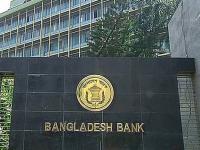
The telecoms law is going to be amended for the third time to wipe out the residues of notional regulatory independence. The authorities have uploaded a draft amendment in their websites ostensibly for public consultation, which will only be in name. In all likelihood, this amendment will be passed unchanged keeping the feedback of consultation undisclosed, as usual. And then telecoms regulation will further slide into the rabbit hole.
Tectonic shift
 For all latest news, follow The Daily Star’s Google News channel.
For all latest news, follow The Daily Star’s Google News channel.
The Sheikh Hasina-led first Awami League government enacted the telecoms law on July 8, 2001. It gave birth to Bangladesh Telecommunication Regulatory Commission (BTRC). The new-born regulator became functional without financial independence on January 3, 2002. Yet BTRC could independently discharge most of its regulatory duties. The telecoms ministry retained the authority of policymaking. Soon the home ministry sneaked in to eavesdrop through the first amendment of the law in 2006.
Bureaucracy, which was legally dethroned from the regulatory empire in 2001, never forgave BTRC. Prime Minister Sheikh Hasina’s second spell at the office began with the much-vaunted “Digital Bangladesh” policy in January 2009. But long before the PM was sworn in, the bureaucracy had rewritten the telecoms law to confiscate BTRC’s regulatory power. It became effective through the second amendment on August 1, 2010. And BTRC was turned into merely a post office of the telecoms ministry.
Aftershock
The bureaucracy, however, remained uncomfortable with the rubble of telecoms law that addresses BTRC as an “independent” commission. So the authorities decided that only “commission” would be good enough, since BTRC’s “independent” jewels were plundered in 2010. This proposed third amendment is all about safeguarding that booty.
A relegated BTRC paves the way for the emergence of an informal regulator named the Department of Telecommunication (DoT). Created on June 25, 2015, the DoT is manned by the telecoms cadre officers of the state-owned incumbent. Therefore, its DNA is structured with blind loyalty to the telecoms ministry.
The telecoms ministry has found the “technically sound” DoT as the perfect sidekick to whiplash the industry. In December 2020, the ministry adorned DoT with the regulatory power it confiscated from BTRC ten years ago. The ministry-DoT partnership effectively cripples BTRC (where military officers rotate in key technical positions since 2007). A closer look is called for to reveal the bureaucracy’s regulatory performance since dwarfing BTRC in 2010.
Optical illusion
The government has so far issued six licenses for nationwide deployment of optical fibre cable (OFC) networks. Dubbed as “Nationwide Telecommunication Transmission Network” or NTTN, there are three private and three public sector operators. Paradoxically enough, the cash-rich mobile operators are disqualified for NTTN license. And they are not even allowed to share each other’s OFC assets.
However, the NTTN operators are obligated to extensively deploy OFC networks across the country. But nothing of that sort is yet to happen although two private operators, Summit Communication and Fiber @ Home, debuted in 2009. As a result, merely 35 percent of the country’s mobile towers are plugged with OFC networks. No wonder Bangladesh (134) is far behind fibre-rich Pakistan’s (117) mobile data speed rank in Ookla’s Global index of May 2021.
Nationwide OFC transmission deployment needs hundreds of millions of dollars in investments with up to 15 years of payback period. Today’s six NTTN licensees together lack that kind of capacity and deep pocket.
The state-owned Bangladesh Telecommunication Company Limited (BTCL) is the only NTTN that has some sort of competence in OFC operations. But Bangladesh Computer Council (BCC) stormed into the NTTN business without any license in 2017. BCC is under the ICT Division of the telecoms ministry. It advises and facilitates the usage of ICT-based applications within the government. Running telecoms network has never been its forte.
Yet BCC has contracted Summit Communication and Fiber @ Home to install, maintain and operate its OFC network. In other words, BCC has bankrolled and outsourced the operation of its unlicensed nationwide OFC network among selected private NTTN providers.
There is no technical or financial disclosure about the unlicensed OFC operations of BCC. Private windfall from such an opaquely structured deal out of the taxpayers’ pocket to run an unlicensed telecoms network is unprecedented.
Lost in space
Bangladesh has launched Bangabandhu-1, its first commercial satellite, on May 12, 2018. “There are more than 750 union parishads in the country where there is no internet connectivity and we want to ensure broadband internet with this satellite over there,” the telecoms minister Mustafa Jabbar told The Daily Star the day this satellite was launched.
Fast forward to 2021. Bangladesh Computer Council (BCC) under the telecoms ministry has decided to contract Bangladesh Army to deploy OFC network across the hilly districts. Fifty-nine union parishads under Bandarban, Rangamati and Khagrachhari districts will get broadband internet connectivity under this scheme.
The Army will be contracted considering the security risk and other relevant impediments in installing OFC across remote hilly areas, said the cabinet division’s additional secretary Shamsul Arefin. The budget and source of fund for this commercial project remain undisclosed.
The Army acts whenever the government asks. It, of course, never questions the legality of the task. But the said optical fibre project in the hilly districts is unlawful, because the BCC does not have an NTTN license. Therefore, Bangladesh Army should be contractually indemnified from the legal backlash of this project.
Taxpayers of Bangladesh have paid USD 248 million including a USD 188.7 million loan from HSBC to launch the Bangabandhu-1 satellite. An additional USD 28 million was paid to rent the orbital slot. This USD 276 million satellite will last in the orbit until 2033 and then self-destruct. Commercially exhausting its huge pool (75 percent) of idle capacity to recover the investment, if not profiting, should be the government’s top priority.
Meanwhile, the telecoms ministry fosters the BCC’s OFC misadventure while jeopardising the fate of Bangabandhu-1. This satellite, paradoxically, mitigates all the risks being cited to engage Bangladesh Army for the said OFC deployment. Who will maintain and operate this public-funded OFC network in the hilly region also remains unanswered.
Way out
BCC reports to the Ministry of Posts, Telecommunications and Information Technology. It could not operate outside the scope of the law without the line ministry’s blessings. This has compromised the telecoms ministry’s moral authority to impartially govern the sector with the highest priority to public interest, let alone arbitrarily regulating telecoms.
Regulatory credibility has already plummeted to its lowest ebb. The chronological exit of Singapore’s SingTel, Japan’s NTT DoCoMo and India’s Airtel write unpleasant texts on the telecoms sector’s wall. The government should restore the BTRC’s authority to the pre-2010 era. Otherwise, its “Digital Bangladesh” will remain a different goal to achieve.
Abu Saeed Khan is a Senior Policy Fellow at LIRNEasia.









